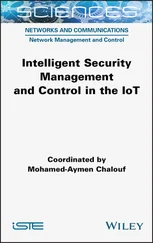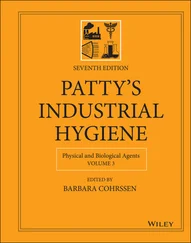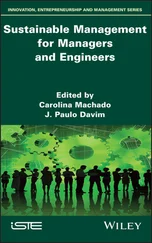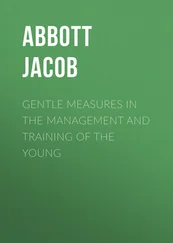This result demonstrates the value of exposure assessment and IH involvement in “voluntary” agency‐sponsored PS initiatives. Information on VCCEP and this example can be found on the USEPA website at https://chemview.epa.gov/chemview.
3.14 History of Product Stewardship
It is difficult to find the source or the time for the origin of the modern PS concept. While the first public concerns about the chemicals began to be known in the early 1960s the concerns generally revolved around their environmental impact. However, the focus on products from cradle to grave evolved over time as a key element in industry activities and programs. This approach was accelerated by notable catastrophic events and began to take a more organized or program‐oriented shape in the mid to late 1980s. Industry leaders quickly recognized that the management of chemical products and their potential impact on people and the environment was a continuum; it could not stop at the plant gate. Although customers and other product handlers had to take on their own responsibilities in use and disposal, chemical companies had growing motivation that drove them to advise and assist those customers with proper handling. In fact, companies might even withhold products from customers who failed to handle them appropriately, thus practicing true PS. Industry leaders also realized that the public would not understand differentiations about who had control of a product at any one time nor would the media encourage that understanding to take place.
4 A DISCUSSION OF COMPETENCIES COMMONLY EXHIBITED IN INDUSTRIAL HYGIENISTS
To understand what an IH is one can start by reviewing some accepted definitions of the IH profession. The following definitions/descriptions of Industrial Hygiene are offered merely as examples of the many that can be found. Each can add a little insight into the knowledge, motivations, duties, and competencies shared by those who practice IH.
Probably the single most quoted (or paraphrased) definition of IH is
The Anticipation, Recognition, Evaluation, and Control of Workplace Health Hazards.
This short description not only implies the overarching mission of IH but also outlines what could be considered as the four distinct stages of comprehensive IH practice.
The American Industrial Hygiene Association (AIHA), the largest global membership organization for IHs, defines Industrial Hygiene as the
Science and art devoted to the anticipation, recognition, evaluation, prevention, and control of those environmental factors or stresses arising in or from the workplace which may cause sickness, impaired health and well‐being, or significant discomfort among workers or among citizens of the community.
Correspondingly, the AIHA defines IHs as
Scientists and engineers committed to protecting the health and safety of people in the workplace and the community.
The American Board of Industrial Hygiene (ABIH), the largest global IH Certification Organization, describes the scope of technical knowledge assessed in their certification process as follows:
Basic Sciences Occupational disease, illness, injury, and surveillance (biostatistics, epidemiology, toxicology);
Health Hazards Ergonomics/human factors, physical stressors, biological stressors, chemical stressors;
Work Environments Indoor air, industrial processes;
Program Management Principles Investigation methods, ethics, risk communication, guidelines and standards, data management and integration, emergency response;
Evaluation Practices Instrumentation, sampling methods/techniques, analytical chemistry;
Hazard Controls Engineering, PPE, administrative; and
Community Stressors Air pollution, hazardous waste.
The above definitions/descriptions, along with the learnings of many years of diverse experience, help support certain generalizations applicable to the profession of Industrial Hygiene:
IH is science‐based and diverse in nature; IH practitioners must therefore be technically aware across a broad range of disciplines including chemical, physical, biological, and other emerging or special scientific categories.
the process of anticipation, recognition, evaluation, prevention, and control, the fundamental of the practice of IH, is not specific to any single environment or issue; the process can be successful in virtually any form of problem solving.
the practice of IH usually includes at least some emphasis in each of the major areas of Health, Safety and Environmental specialty.
the core mission of IH is not limited to the welfare of a facility' workers or those in the immediate neighborhood; rather it should play a role in improving the health of all peoples and environments affected by commercial activities.
the HSE objectives of IH are not just achieved via the traditional facility‐based approach, but also through strategies linked to product life cycles, transportation or other paradigms.
while the IH profession is not driven by regulation, IH practitioners clearly strive to have a working knowledge of all regulations, laws, and standards applicable to the scope of their current and anticipated work.
The profession of IH, as summarized above, clearly leaves opportunity for practitioners from different backgrounds with different areas of specialization. For example, some IHs ultimately focus on certain stages of the process (i.e. control versus recognition), some on specific scientific rubrics (i.e. physical versus chemical hazards), and still others on management versus field work, and so on. Yet based on the general nature of IH practice and the common requirements to practice IH, certain generic competencies are very likely to be shared by most IH professionals. These competencies/abilities would include
1 a broad understanding of the scientific process, with specific expertise in one (and usually more) aspects of the health sciences.
2 a general understanding of HSE regulatory and standard setting processes, with more complete knowledge of certain specific regulations, laws and standards, and experience working with respective agencies/institutes.
3 HSE risk assessment skills; moreover, the learned ability to coalesce data and circumstances into potential risk, make comparisons to acceptable levels and suggest prudent action.
4 an ability to make responsible estimates when facts, data, and circumstances are not well known.
5 an appreciation for the interrelationships of health, safety, and environmental issues and the associated risks that follow.
4.1 Applicability of IH Competencies to PS Activities
Elsewhere in this chapter, it is described that PS has certain basic activities which are rooted in regulatory requirements:
hazard assessment.
hazard communication.
risk management.
product development.
These activities, moreover, define the minimum standard for any PS program to be compliant or effective. Let us examine each of these basic PS functions against the IH competencies we have defined which are typically exhibited by professional IHs:
1 Hazard Assessment: Virtually all of the IH competencies contribute to this activity, especially nos. 1, 3, 4, and 5. The “Evaluation” part of the basic IH process is indeed hazard assessment and includes the concepts of hazard measurement, exposure estimation, and control banding. For PS purposes, exposure assessments often need to be made for products used in poorly defined applications and across an entire life span through disposal. In other words, it is necessary to estimate and understand exposure potential in unseen workplaces and use scenarios. The training and experiences of an IH are second to none for performing this PS activity. Additionally, as the hazard assessment focus oscillates during a product life cycle from lab to pilot to manufacturing to sales to customers, the IH is the best suited to integrate all the pieces of the chain to minimize information gaps.
Читать дальше












